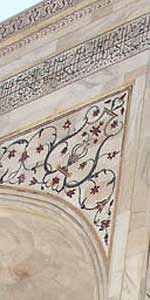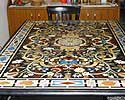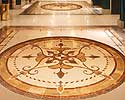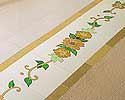Pietra Dura, an
introduction & history
What is Pietra Dura?
An inlaying technique usually associated with workshops in Florence, Italy,
used to describe sculptural or decorative use of hard stones to
decorate furniture, cameos, vases, and panels with various
stones such as malachite, lapis lazuli, and jasper.
History of Pietra Dura:
Pietra dura is an Italian phrase that means "hard stone," and
usually refers to the technique of creating intricate inlaid
pictures from shaped colored stones. The stones used are usually
silicates, including agates, alabaster, amethyst, jade, jasper,
lapis lazuli, malachite, onyx, and topaz. The craft, developed
in antiquity, originally consisted of shaping stones with small
saws, wires and other metal instruments and adding them to
decorative objects such as vases or small sculptures. The art
was revived during the Renaissance by Italian craftsmen and the
first hard-stone workshop was established by the Medici family
in Florence in 1588. The art was also practiced at the courts of
Naples, Madrid, Prague, Paris and elsewhere. From the late 16th
century, the colorful stones were arranged on furniture as
landscapes and flower scenes.
Difference between Indian Inlay & Pietra Dura?
Unlike the pietra dura of Italy and
particularly the Florentine tradition, Indian inlay work is not
three-dimensional but more flat. The Mughal adaptations have
ensured that the European birds have been replaced by the Indian
kingfisher, myna, and red-breasted parakeet.
With the exit of the Mughals, the art of marble inlay work
also started to decline. The number of craftsmen engaged in this
art began to dwindle. So much so that in the mid-19th century
there were only 100 craftsmen specializing in this work.
|
 |








